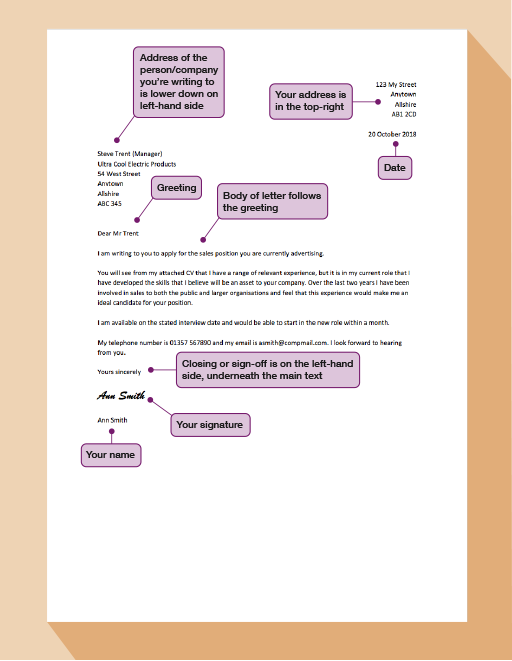2.1 Letters
Most people struggle to remember the last time they wrote a letter, whether formal or informal. Formal letters are usually written for work or to complain or apply for a job. In many of these cases, emails, tweets and other social media posts are taking over. For example, people often tweet about bad customer experience or post a picture of poor food on their social media accounts.
Informal letters are more likely to be to someone you know, for example to thank them. Again, messaging is used more and more for this.
Activity 10 Writing letters
Can you remember the last letter you wrote (other than the one you’ve just written about the vacuum cleaner!)? Was it informal or formal? Who was it to? What was it about?
Discussion
If you struggled to answer these questions, this section might be particularly helpful to you. Improving your writing comes with practice and if you do not write a lot of letters, this section gives you the opportunity to develop skills that you will need to pass a Functional Skills English or Essential Skills assessment.
Formal or informal?
A letter can be formal or informal. Which one it is depends on its purpose, content and intended audience. This is similar for other types of writing, but letters are a good way to show the differences between formal and informal writing.
When you write anything, your reader understands its meaning in two different ways: what the text says and how it is written.
The words in the text give you information, but the tone of the language is also important. This tells you whether the text is serious or funny, friendly or official, angry or light-hearted. It tells you about the purpose of the text. It also gives you clues about who it is meant for.
Whenever you begin to read a text, especially a letter, you usually know straight away whether it is:
- formal – from an organisation like the local council or a college
- informal – from a friend or relation.
This is because you notice clues like these in the text:
- the style of address: how the letter begins.
- the kind of language that is used: very formal or friendly and personal.
- the way it ends: for example, ‘Yours faithfully’ or ‘Best wishes’.
Activity 11 Informal language
The information in Texts A and B below is the same, but the style and language used is quite different.
In Text B, highlight examples of:
- slang words
- a friendly/casual style
- use of capital letters.
Text A
Dear Sir/Madam
Owing to unforeseen circumstances, it will be necessary to make an 8% increase in water rates in your area from April 2019.
Yours faithfully
Fred Bloggs
Hampshire County Council Water Rate Manager
Text B
Discussion
Here are examples of the three signs of informal language from Text B:
Slang words: ‘dosh’, ‘’cause’
Friendly/casual style: ‘Stay cool, man!’
Capital letters: ‘RIGHT NOW’
You would not use this kind of language in a formal letter of complaint or a job application letter.
You can probably picture a letter in your mind, but what does a piece of writing actually need in order to be considered a letter?
Elements of a letter
The letter below is a formal letter of application.
There is some flexibility as to where certain parts of a letter go. For example, the writer’s address can also be in the top left of the letter and you may also see it run along the top of the page. However, following the traditional format ensures that you do not run the risk of the reader missing key information or losing marks for using the wrong format in an exam.
Below is the usual format of a formal letter:
- The writer’s address in the top right-hand or top left-hand corner
- The date underneath that address
- The address of the person/company being written to is lower down on the left-hand side
- The greeting is underneath that address
- The body of the letter follows the greeting
- The closing or sign-off is on the left-hand side, underneath main text
- Your signature (if hand-written) underneath
- Your name underneath
The greeting and closing/sign-off
The usual greetings used in a formal letter are ‘Dear Sir/Madam’. If you know the person’s name, it’s ‘Dear’ and then their name.
If you use Sir/Madam, the closing should be ‘Yours faithfully’.
If you use their name, the closing should be ‘Yours sincerely’.
It is becoming more acceptable to break these rules and it is quite common to end even formal letters with ‘Kind regards’ or ‘Yours truly’. However, when asked to write a formal letter it is sensible to follow the traditional rules.
Activity 12 Informal letters
Informal letters are less likely to stick to the rules. Can you think of some examples of why you might write an informal letter and who you might write one to?
Discussion
You might have thought of thank you letters to family members or friends, pen-pal letters or catch-up letters to friends living far away.

